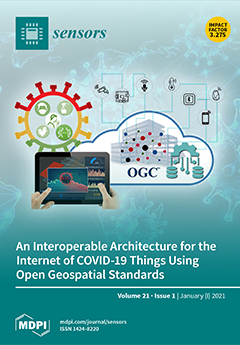Timber volume is an important asset, not only as an ecological component, but also as a key source of present and future revenues, which requires precise estimates. We used the Trimble TX8 survey-grade terrestrial laser scanner (TLS) to create a detailed 3D point
[...] Read more.
Timber volume is an important asset, not only as an ecological component, but also as a key source of present and future revenues, which requires precise estimates. We used the Trimble TX8 survey-grade terrestrial laser scanner (TLS) to create a detailed 3D point cloud for extracting total tree height and diameter at breast height (1.3 m; DBH). We compared two different methods to accurately estimate total tree heights: the first method was based on a modified version of the local maxima algorithm for treetop detection, “H
TTD”, and for the second method we used the centers of stem cross-sections at stump height (30 cm), “H
TSP”. DBH was estimated by a computationally robust algebraic circle-fitting algorithm through hierarchical cluster analysis (HCA). This study aimed to assess the accuracy of these descriptors for evaluating total stem volume by comparing the results with the reference tree measurements. The difference between the estimated total stem volume from H
TTD and measured stems was 2.732 m
3 for European oak and 2.971 m
3 for Norway spruce; differences between the estimated volume from H
TSP and measured stems was 1.228 m
3 and 2.006 m
3 for European oak and Norway spruce, respectively. The coefficient of determination indicated a strong relationship between the measured and estimated total stem volumes from both height estimation methods with an R
2 = 0.89 for H
TTD and R
2 = 0.87 for H
TSP for European oak, and R
2 = 0.98 for both H
TTD and H
TSP for Norway spruce. Our study has demonstrated the feasibility of finer-resolution remote sensing data for semi-automatic stem volumetric modeling of small-scale studies with high accuracy as a potential advancement in precision forestry.
Full article






